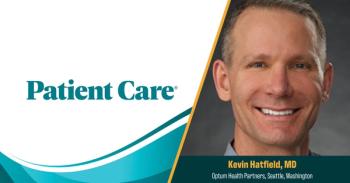
Polypharmacy in People with HIV: A Growing Problem
Managing chronic disease and HIV in the over-50 population leads to a high risk of adverse drug interactions. Here are the most common polypharmacy culprits for HIV patients, and tips for avoiding these dangerous mishaps.
Today, about a third of all people living with HIV are 50 and older, thanks to combination antiretroviral therapy (ART) that has transformed the infection from a death sentence into a chronic, manageable condition. By 2030, experts predict, half of all HIV-infected individuals will be 50 or older.1
With age, however, comes a host of chronic diseases and medical conditions such as diabetes, hyperlipidemia, hypertension, depression, anxiety, and heart disease that often require multiple medications to manage. Combined with several ART drugs, this polypharmacy can increase the risk of adverse drug reactions, falls, cognitive impairment, urinary incontinence, and nonadherence due to increased pill burden. In people with HIV, it may also affect the efficacy of ART and, together with nonadherence, lead to higher viral loads and drug resistance.
A
Of the 3,810 patient records the researchers analyzed for 2006 to 2010, 7% (267) of patients were prescribed at least one contraindicated ART/non-ART combination, and a third (1,267) were prescribed at least one drug combination with moderate or high evidence of interactions.
The most common contraindicated combinations were:
• Proton pump inhibitor (PPI) with atazanavir or nelfinavir
• Protease inhibitor (PI) with simvastatin or lovastatin
• Protease inhibitor with contraindicated benzodiazepines
The most common combinations with evidence of interaction were:
• H2-receptor antagonists and/or PPIs with PIs
• Erectile dysfunction agents with PIs and non-nucleoside reverse transcriptase inhibitors (NNRTIs)
• Antidepressants (bupropion, sertraline, and paroxetine) with PIs and NNRTIs
• Lithium with atazanavir
Variables associated with contraindicated prescriptions included older age, anxiety dyslipidemia, higher daily non-ART medication burden, and taking a PI.
A
While it wasn’t unexpected that 33% of patients were taking potentially interactive drugs, said lead author Carol Holtzman, PharmD, she and her colleagues were surprised by the number of patients taking contraindicated combinations. “You shouldn’t do it, you shouldn’t have it, but sometimes it happens,” added Holtzman, who is clinical assistant professor at the Temple University School of Pharmacy. “It could be that the doctor is aware of it and decided to monitor the patients more closely. Patients really do need certain medications and it might be unavoidable.”
However, the problem may also arise due to lack of knowledge, particularly given the growing arsenal of ART drugs. Other reasons include the absence of alternative medications, or that the healthcare provider is not aware that the patient is taking other medications. Many HIV-positive patients are treated by more than one physician, she said.
Indeed,
Even when physicians use computerized order entry (COE) systems designed to warn them of potential interactions, said Holtzman, many just override the alerts, a trend called “alert fatigue.” It’s not always their fault, Holztman said, since COE databases are often out of date.
Holztman expects that as the number of people 50 and older living with HIV continues to increase, the percentage of clinically significant drug interactions will also rise.
The message for physicians, she said, is to evaluate a patient’s entire medication list carefully and also to ask patients what they are taking. For instance, many acid-reducing medications are available over-the-counter, so patients may not include them on medication lists.
Another alternative is to involve pharmacists in reconciling medications. Singlehandedly managing the complex polypharmacy of HIV-infected may not be realistic, said Holtzman. “Physicians don’t have that kind of time.”
For a complete list of drug-drug interactions, dosing, and recommendations, see the
References:
REFERENCE1. Brooks JT, Buchacz K, Gebo KA,
et al.
HIV infection and older Americans: the public health perspective.
Am J Public Health
2012;102(8):1516-1526.
Newsletter
Enhance your clinical practice with the Patient Care newsletter, offering the latest evidence-based guidelines, diagnostic insights, and treatment strategies for primary care physicians.


















































































































































































































































































